If your Second Monitor is zoomed-in on a Windows computer, there might be something wrong with your system’s display configuration or the drivers. However, sometimes, the issue can be nothing but a glitch. In this post, we will find out which of these situations is valid in your case and how you can synchronize both displays.
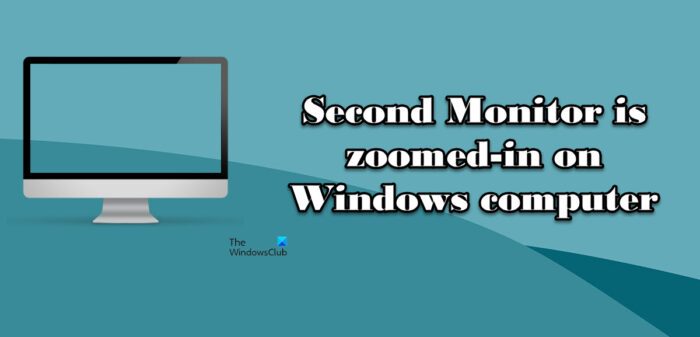
Fix Second Monitor is zoomed-in on Windows computer
If Second Monitor is zoomed-in on a Windows 11/10 computer, follow the prescribed solutions to resolve the issue.
- Change Display Orientation
- Remove the external Display and attach it again
- Configure Multiple Display Settings
- Disable Overscan
- Match Refresh Rate on multiple displays
- Update Display Drivers
- Reinstall Graphics Drivers
Let us talk about them in detail.
1] Change Display Orientation
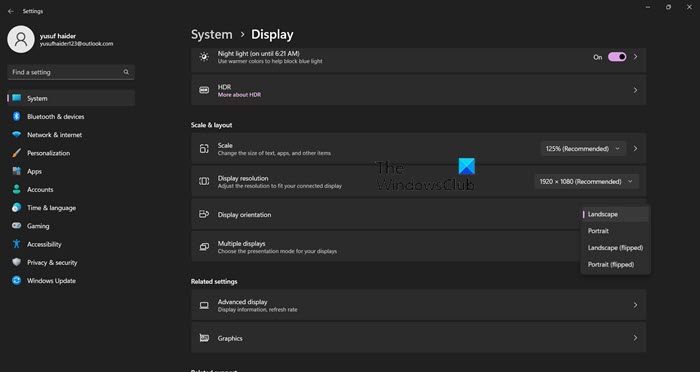
The first thing you should do is change the display orientation of both displays to portrait and revert it back to landscape. This will allow Windows to reconfigure the Display Orientation and hopefully, resolve the issue for you.
- Launch Settings.
- Go to System > Display.
- Change Display Orientation to Portrait.
Do this to all displays and check if the external monitor issue is resolved or not. In case, both displays are synchronized, revert the displays back to Landscape.
2] Remove the external Display and attach it again
Next up, let us try removing the connected display and adding it again. This will allow the operating system to recalibrate the newly added display and configure it correctly this time. So, go ahead and remove the external display, wait for a minute and then add it again. Hopefully, this will do the job for you.
3] Configure Multiple Display Settings
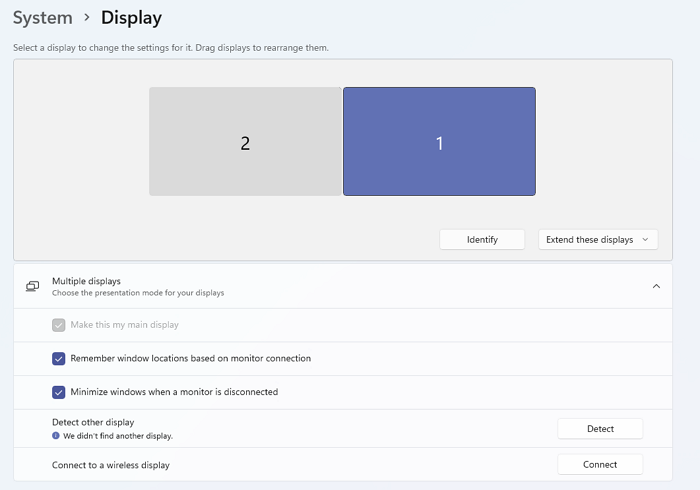
There are some changes that you need to make to Multiple Display Settings in order to resolve this issue. We are going to make some changes in the Settings allowing monitors to synchronize their displays. But first, open Settings and go to System > Display. Then, make the following adjustments.
- In the Multiple displays section, select Extend these displays from the drop-down menu and check if the issue is resolved.
- In case, the issue persists, then change Extend these displays to Duplicate these displays.
- If the issue is still not resolved, click on the Detect button in the Multiple displays section.
If making these changes doesn’t work for you, move on to the next solution.
4] Disable Overscan
Overscan is a feature in certain monitors and TVs allowing the device to show some portion of the picture outside the borders of the display. Maybe the reason why your second monitor is zoomed-in is Overscan, the feature can be enabled and cause trouble for you. That is why, go ahead and disable Overscan, procedure to do the same is different for different TVs, but as a general rule of thumb, go to your TV settings > Advanced, and finally disable Overscan. This will do the job for you.
5] Match Refresh Rate on multiple displays
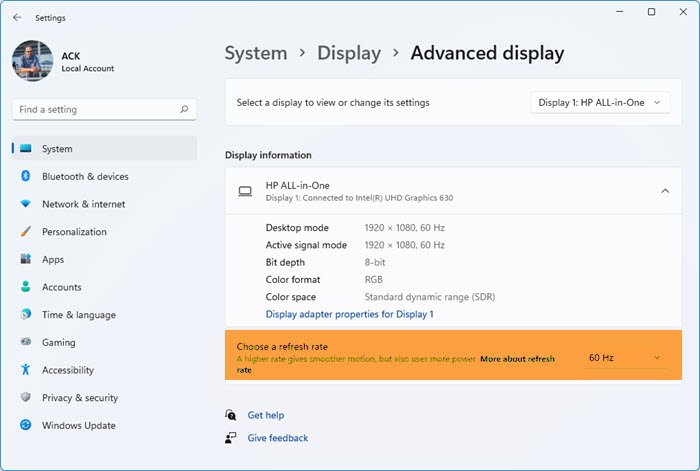
In case, the refresh rate on your multiple displays are different, then there are some chances that you will see these kinds of error. That is why we are going to match the refresh rate on both displays and see if that helps. Follow the prescribed steps to do the same.
- Launch Settings by Win + I.
- Go to System > Display > Advanced Display.
- Select the display you want to change the refresh rate of from “Select a display to view or change its settings”.
- Finally, select a refresh rate from the “Choose a refresh rate” section.
Do this to all displays and see if the issue is resolved. Hopefully, your issue will be resolved.
6] Update Display Drivers
There is a possibility that your Display Drivers are outdated or buggy. There are various things one can do to remedy this situation, but the first and probably the most effective way is to update the Graphics Drivers. You need to update both the integrated and dedicated (if applicable) drivers. Use any of the following methods to update Graphics Drivers.
- Use a free driver update software
- Install Driver and Optional Update from Windows Settings.
- Update GPU Driver from Device Manager.
Hopefully, this will do the job for you.
7] Reinstall Graphics Drivers
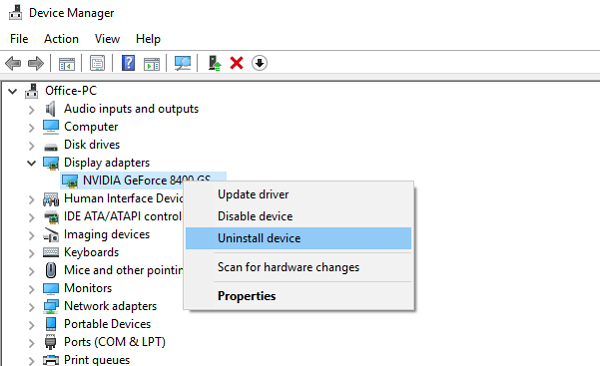
If updating didn’t work for you, then your second option is to reinstall the Graphics Drivers. Windows is well aware of the ability of its drivers to get corrupted pretty easily, which is why they have made it pretty easy to reinstall GPU drivers using the Device Manager. Follow the prescribed steps to do the same.
- Open Device Manager from the Start Menu.
- Expand Display Adapter.
- Right-click on the driver and select Uninstall device.
- Shut down and reboot your computer as it will allow Windows to reinstall the driver.
If Windows is unable to download the driver, go to the manufacturer’s website and download it manually. Hopefully, this will do the job for you.
We hope that you will be able to resolve the issue in no time after executing the solutions mentioned in this post.
Read: Magnifier Tips and Tricks in Windows
How do I fix Overscaling on my second monitor?
If your second monitor is Overscailing, check if the Overscanning feature is enabled in your monitor’s settings. If that’s the case, you can easily disable it and get your issue resolved. Also, do check if your HDMI cable is faulty, you can easily get a new one for cheap and swap it with the faulty one. If that doesn’t work, check some other solutions mentioned in this post to resolve the issue. Hopefully, you will be able to resolve the issue easily.
Read: Fix Screen Resolution problems in Windows
How do I unzoom my second monitor?
To unzoom or zoom-out your second monitor, you need to open the Windows Settings by pressing Win+I buttons together. Then, go to Accessibility > Magnifier. You need to use the 100% or disable the Magnifier on your monitor to get rid of this problem.
Also Read: How to fix Stretched Screen display problem on Windows.
Leave a Reply